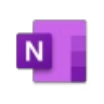
OneNote in Microsoft Tools: Overview, Uses, and Comparison
Microsoft OneNote is a digital note-taking application designed to help individuals and organizations capture, organize, and share information in a flexible and structured way. It mimics the experience of using a physical notebook but enhances it with the power of digital tools, making it easy to create, store, and retrieve information across multiple devices. OneNote has become an essential productivity tool within the Microsoft ecosystem, particularly because of its integration with Microsoft 365 and other services such as Outlook, Teams, and OneDrive.
One of the main uses of OneNote is for capturing notes. Users can type, write with a stylus, or draw directly within the application. It supports multimedia input, meaning notes can include not just text but also images, audio recordings, video, and embedded files. This flexibility makes it useful for students taking lecture notes, professionals capturing meeting minutes, or individuals recording personal thoughts and ideas.
Another important use is organizing information. OneNote is structured around notebooks, sections, and pages, which allows users to create a personalized system for storing data. For example, a student could create separate notebooks for each subject, while a professional might create notebooks for different projects. This hierarchical structure makes it simple to keep information well organized and easy to navigate.
Collaboration is a significant feature of OneNote. Notebooks can be shared with others, enabling teams to work together in real time. Edits and updates are automatically synchronized through OneDrive, which ensures that all collaborators have access to the latest version of the notes. This makes OneNote particularly valuable in educational and business settings where group projects and teamwork are common.
OneNote also supports task management and integration with other Microsoft tools. Users can create to-do lists, link notes to Outlook tasks, and collaborate through Microsoft Teams by embedding OneNote directly into channels. This deep integration streamlines workflows and ensures that information captured in OneNote can easily connect to other productivity tools.
Accessibility and cross-platform functionality are additional strengths. OneNote is available on Windows, macOS, iOS, Android, and through web browsers, making it possible to access notes from virtually anywhere. This cross-device compatibility ensures that users can start taking notes on one device and continue seamlessly on another.
From a cost perspective, OneNote is free to use and available as a standalone application. Users can download it independently without a Microsoft 365 subscription. However, the experience is enhanced when used as part of Microsoft 365, where additional features, larger storage through OneDrive, and enterprise-level collaboration tools become available. For most individuals, the free version provides more than enough functionality, while organizations often choose the subscription model for advanced features and integration.
In terms of comparison, OneNote distinguishes itself from other note-taking apps in several ways. Unlike Evernote, which relies heavily on a paid subscription model, OneNote offers most of its features for free. Compared to simpler note-taking tools like Google Keep or Apple Notes, OneNote provides a more structured and powerful environment with its notebook system, multimedia support, and collaboration features. Its deep integration with the Microsoft ecosystem makes it particularly advantageous for users who already rely on Office applications or Microsoft Teams.
In conclusion, Microsoft OneNote is a versatile and powerful tool for digital note-taking and information management. It combines free accessibility with advanced features, offering a solution that works for students, professionals, and organizations alike. Its ability to capture notes in multiple formats, organize information hierarchically, and support collaboration makes it one of the most comprehensive tools in its category. While alternative applications exist, OneNote’s integration with Microsoft 365 and its cost-effectiveness make it a standout option for anyone looking to streamline their workflow and manage information more effectively.












